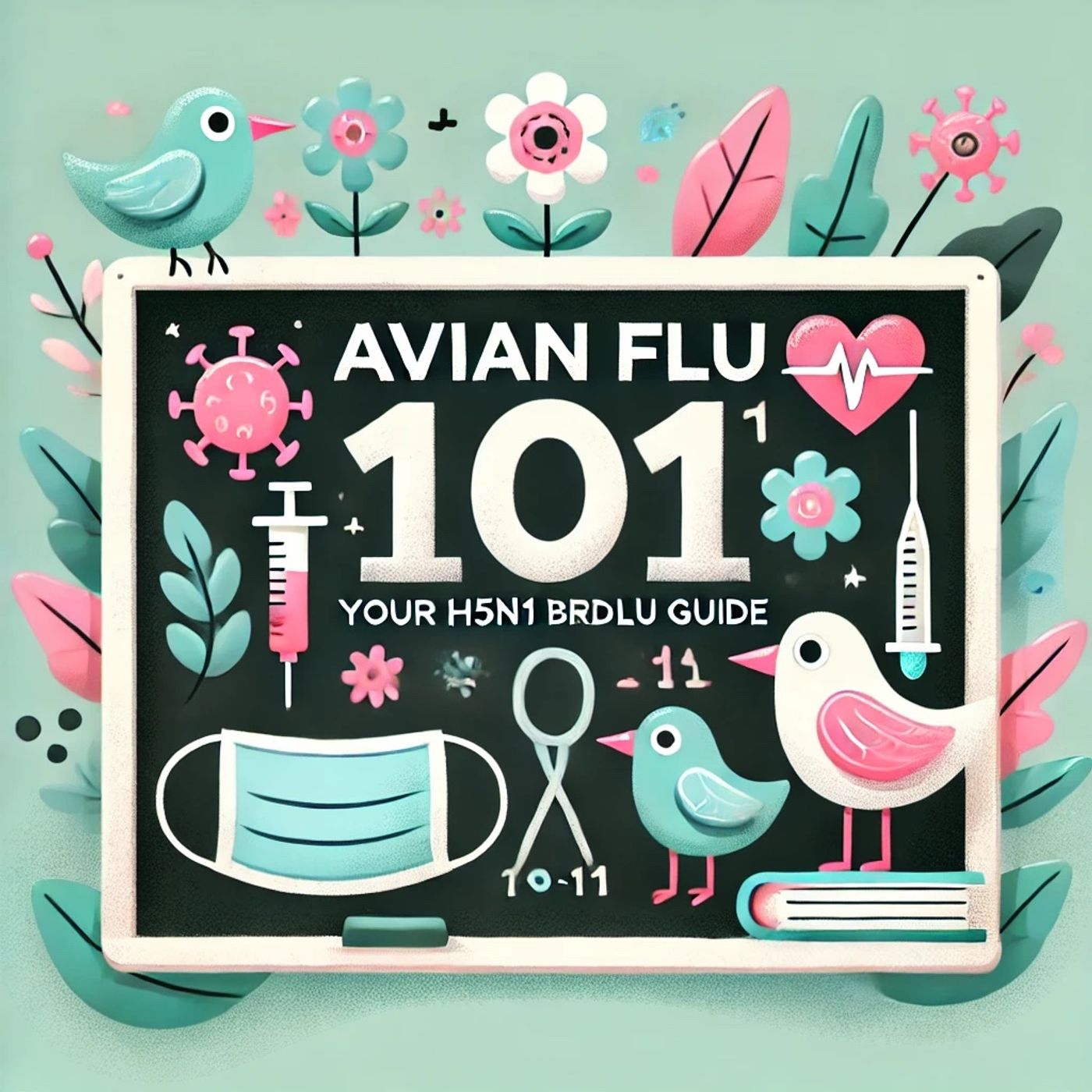Podcast Episode Details
Back to Podcast Episodes
H5N1 Bird Flu Explained: What You Need to Know About Avian Influenza Transmission and Risks in 2025
Welcome to Avian Flu 101: Your H5N1 Bird Flu Guide, your three-minute primer from Quiet Please.
Let’s start with the basics. Bird flu, also known as avian influenza, is an infectious disease caused by influenza viruses that mainly affect birds. The most notorious strain is called H5N1, which is highly pathogenic—meaning it can quickly devastate flocks of poultry. H5N1 belongs to a group of viruses called influenza A, the same broad category that includes the seasonal flu that affects humans according to the University of Florida’s Emerging Pathogens Institute.
So, what is a virus? Picture it like a microscopic thief made of genetic material and a protein coat. Unlike bacteria, viruses can’t survive alone. They hijack cells in living creatures, order those cells to make more viruses, and in doing so, cause illness.
H5N1 first appeared in 1996 and quickly spread worldwide, mostly in birds, but it can infect many mammals including humans, farm animals, and even pets. Most human cases in the United States have been mild and usually involved people who had close contact with sick birds or dairy cows. Symptoms in humans include conjunctivitis, fever, and breathing problems. Although H5N1 is devastating in poultry, it hasn’t caused severe disease in humans in recent U.S. outbreaks, but experts warn that it could mutate.
Now, let’s look at some key terminology:
- **HPAI:** Highly Pathogenic Avian Influenza, referring to flu strains like H5N1 that kill birds rapidly.
- **Zoonosis:** A disease that can jump from animals to people.
- **Mutation:** When a virus’s genetic material changes, sometimes letting it infect new species or spread more easily.
To understand bird-to-human transmission, imagine the virus as sticky paint on the feathers and beaks of birds. If humans touch those birds, then touch their face or breathe in droplets, the paint—virus—can get inside, causing infection.
Historically, major H5N1 outbreaks led to the culling of millions of birds to protect flocks and prevent spread. We learned the importance of robust surveillance, quick response, and limiting contact with sick animals. While the global death rate from H5N1 was previously 50%, U.S. health officials, including the CDC in March 2025, emphasize that only one U.S. fatality occurred out of 70 cases to date. This means the current risk to the general population is considered low.
How does H5N1 compare to seasonal flu and COVID-19? Seasonal flu viruses spread easily among people, and for most, the illness is mild. COVID-19, caused by a different virus called SARS-CoV-2, spreads even more easily and can cause serious disease, especially in older adults. H5N1 rarely infects people but can be deadly when it does. Unlike the seasonal flu, there are limited vaccines for H5N1, mostly reserved for high-risk individuals, and routine flu vaccines do not protect against H5N1.
Let’s answer a few common questions:
Q: Can I get H5N1 from eating eggs or chicken?
A: Properly cooking eggs and poultry kills the virus, so eating cooked products is safe.
Q: Do pets get bird flu?
A: Cats, dogs, and farm animals can be infected, but cases are rare. Keep pets away from sick birds and never feed them raw milk or meat from unknown sources.
Q: Is there a treatment?
A: Yes—antiviral medicines like Tamiflu can help, especially if given early.
Q: Should I be worried?
A: For now, risk to the general public is low, but following basic hygiene and avoiding contact with sick or dead animals is sensible.
Thank you for tuning in to Avian Flu 101. We hope you learned something new. Be sure to come back next week for more. This has been a Quiet Please production—visit Quiet Please Dot A I for more information.
For more http://www.quietplease.ai
Published on 2 days, 16 hours ago